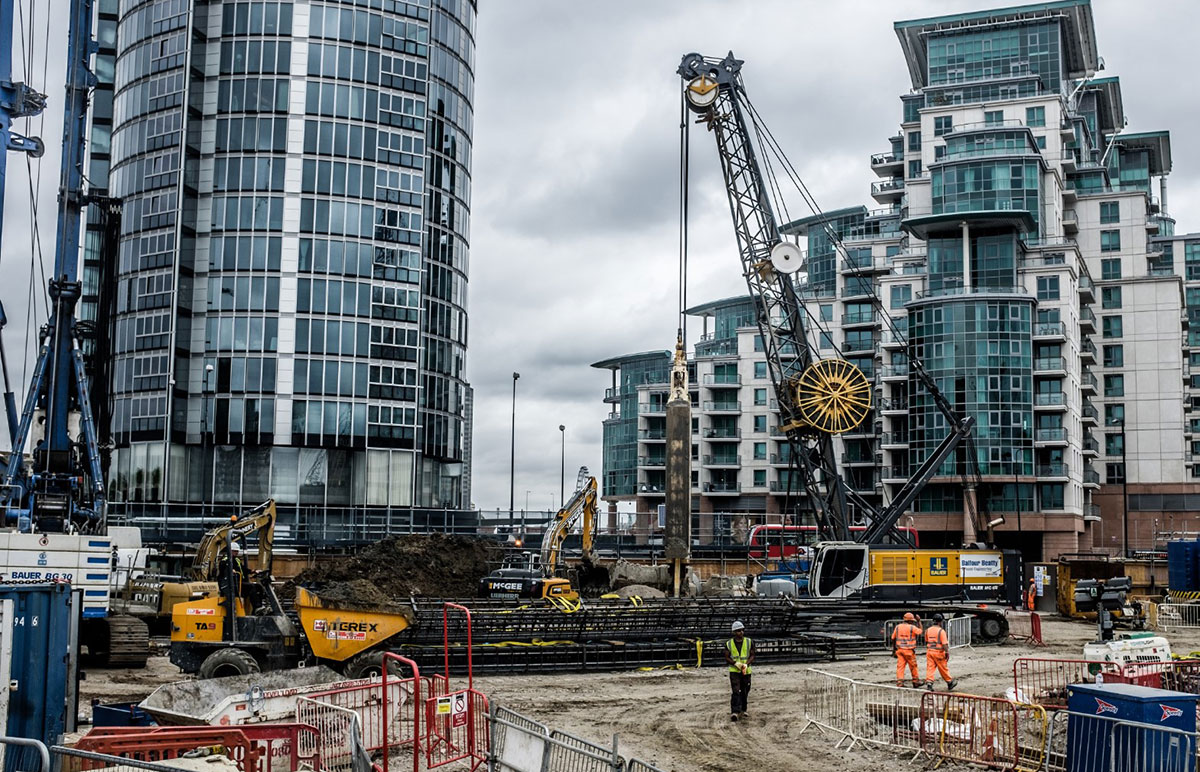Little Known Questions About Geotheta.
Little Known Questions About Geotheta.
Blog Article
What Does Geotheta Do?
Table of ContentsThe Facts About Geotheta UncoveredGeotheta - Truths3 Simple Techniques For GeothetaThe Basic Principles Of Geotheta Geotheta Things To Know Before You Buy

They perform website investigations, accumulate samples, perform lab tests, and assess information to examine the suitability of the ground for building and construction tasks - Consulting Engineer. Based upon their findings, geotechnical designers supply recommendations for structure style, incline security, retaining frameworks, and mitigation of geotechnical hazards. They work together with other experts, such as engineers, architectural engineers, and building and construction groups, to make certain that geotechnical factors to consider are incorporated into the total task style and implementation
By evaluating the habits and residential properties of dirt and rock, they can identify possible geotechnical hazards such as landslides, soil settlement, or slope instability. Their expertise assists protect against failures or accidents that could endanger lives and residential property. Here are some in-depth responsibilities and obligations of a geotechnical designer: Website Examination: Geotechnical engineers conduct website examinations to gather information on subsurface conditions.
They interpret the information to understand the residential or commercial properties and actions of the dirt and rock, including their stamina, leaks in the structure, compaction attributes, and groundwater problems. Geotechnical Analysis and Layout: Geotechnical designers evaluate the data collected during site examinations to analyze the security and suitability of the website for construction projects. They perform geotechnical estimations and modeling to examine variables such as bearing capability, negotiation, slope stability, side planet stress, and groundwater flow.
The 45-Second Trick For Geotheta
Structure Design: Geotechnical designers play an important duty in creating structures that can securely support the desired structure. They analyze the soil problems and load requirements to determine the suitable foundation kind, such as superficial foundations (e.g., footings), deep structures (e.g (https://fliphtml5.com/homepage/bdjcx/geotheta/)., stacks), or specialized strategies like soil renovation. They consider aspects such as settlement limitations, birthing capability, and soil-structure interaction to develop optimum foundation styles
They review construction strategies, screen site activities, and conduct field evaluations to verify that the design referrals are adhered to. If unexpected geotechnical concerns arise, they assess the scenario and offer suggestions for remediation or changes to the layout. Risk Assessment and Mitigation: Geotechnical engineers evaluate geotechnical risks and risks related to the job site, such as landslides, liquefaction, or soil disintegration.

Partnership and Communication: Geotechnical designers work very closely with other experts included in a job, such as engineers, structural designers, and building groups. Reliable communication and partnership are important to incorporate geotechnical considerations right into the general job style and construction procedure. Geotechnical engineers give technological knowledge, response queries, and make sure that geotechnical requirements are met.
Geotheta Fundamentals Explained
Here are some kinds of geotechnical designers: Structure Engineer: Structure engineers concentrate on creating and assessing structures for structures. They analyze the soil problems, lots demands, and site attributes to identify one of the most appropriate structure kind and design, such as shallow structures, deep foundations, or specialized techniques like heap foundations.
They examine the factors influencing slope stability, such as dirt buildings, groundwater conditions, and incline geometry, and create strategies to stop incline failings and reduce risks. Quake Engineer: Earthquake designers specialize in assessing and making frameworks to hold up against seismic pressures. They analyze the seismic hazard of a website, examine soil liquefaction capacity, and develop seismic style requirements to ensure the safety and resilience of frameworks during quakes.
They carry out field screening, accumulate examples, and assess the collected information to characterize the dirt buildings, geologic formations, and groundwater conditions at a site. Geotechnical Instrumentation Engineer: Geotechnical instrumentation engineers focus on monitoring and gauging the habits of dirt, rock, and frameworks. They set up and maintain instrumentation systems that keep track of variables such as dirt settlement, groundwater degrees, slope movements, and architectural variations to Read Full Report examine efficiency and provide very early warnings of prospective concerns.
Some Known Facts About Geotheta.
They carry out examinations such as triaxial examinations, loan consolidation tests, straight shear tests, and leaks in the structure tests to collect information for geotechnical evaluation and layout. Geosynthetics Engineer: Geosynthetics engineers focus on the layout and application of geosynthetic products, such as geotextiles, geogrids, and geomembranes. They use these products to enhance soil stability, enhance slopes, supply drain services, and control disintegration.
They tend to be investigatory people, which suggests they're intellectual, reflective, and inquisitive. They are interested, systematic, reasonable, logical, and logical. Some of them are additionally social, suggesting they're kind, charitable, participating, client, caring, useful, compassionate, skillful, and friendly - Consulting Engineers.
In the workplace environment, geotechnical designers utilize specialized software devices to perform estimations, develop layouts, and analyze information. They prepare reports, testimonial task specs, interact with clients and staff member, and coordinate task activities. The workplace setup supplies a conducive atmosphere for study, evaluation, and cooperation with various other experts entailed in the job.
The Basic Principles Of Geotheta
They often check out task websites to conduct site investigations, evaluate geotechnical problems, and gather data for evaluation. These brows through entail traveling to various locations, often in remote or difficult surfaces. Geotechnical engineers may execute soil sampling, conduct tests, and monitor building tasks to ensure that the geotechnical facets of the task are being implemented correctly.
Geotechnical engineers likewise operate in specialized geotechnical labs. In these facilities, they perform experiments, do examinations on soil and rock examples, and assess the design properties of the materials. Geotechnical research laboratory engineers work thoroughly in these settings, handling testing equipment, operating tools, and recording information. They team up with various other laboratory team to guarantee accurate and trusted screening outcomes.
Report this page